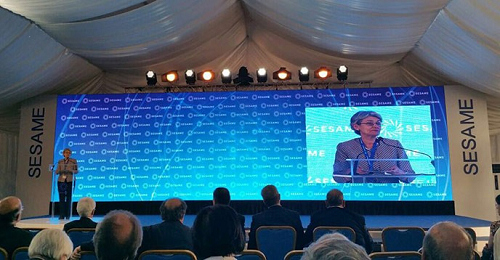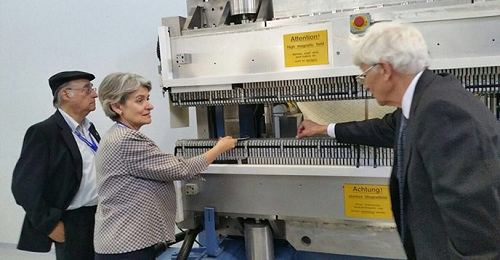SESAME facility slated to boost science and cooperation in the Middle East
The Synchrotron-light for Experimental Science and Applications in the Middle East (SESAME) laboratory, which includes a third generation light source, on May 16th, was opened near Amman, Jordan, where it will serve scientists from Cyprus, Egypt, Iran, Israel, Jordan, Pakistan, the Palestinian Authority and Turkey.

The facility is expected to boost research and scientific cooperation in the Middle East across inter-regional divides. It is also designed to help stem the brain-drain and to attract many of the region’s brightest young talents to pursue higher education in the sciences, thereby contributing to the development of a knowledge-based economy.
Since its inception at UNESCO in 1999, SESAME has become a beacon of science diplomacy, with partners from across the globe leaving their differences aside to share knowledge and resources for the advancement of science. It is also home to the world’s first accelerator to be powered solely by solar energy.
SESAME is now a fully independent intergovernmental organization, whose statutes are deposited with UNESCO, which has supported its development since its beginning.
Like the European research centre, CERN, also created after a UNESCO decision, SESAME shows that with the political backing of UNESCO, patience and hard work, dedicated scientists from regions marked by conflict can build a world-class research facility.
“The opening of SESAME is the result of a lot of work, a lot of patience, but, above all, it is the result of a dream and a vision shared by a few pioneers, who met some 20 years ago, at UNESCO headquarters, to launch this project,” said Irina Bokova, the Director-General of UNESCO, at the opening ceremony.
“UNESCO was created to foster peace and security by promoting international collaboration through education, science and culture. The opening of SESAME embodies this vision at its very best,” the Director-General added. “It is for such projects that we exist, to show the importance of international cooperation, to protect the green shoots of such initiatives, to embrace them and help them grow.”

Chris Llewellyn Smith, President of SESAME’s COUNCIL, described the opening of the facility as “the fulfilment of many hopes and dreams. The hope that a group of initially inexperienced young people could build SESAME and make it work, they have […]. The hope that, nurtured by SESAME’s training programme, large numbers of scientists in the region would become interested in using SESAME, they have [...] and the hope that the diverse Members could work together harmoniously.”
In recent decades, the extraordinary power of synchrotron light has made it an essential tool for studying matter on scales ranging from biological cells to atoms, using radiation from the infrared to X-rays. SESAME will count with several beamlines designed to produce light with a range of characteristics suited for different types of investigation. Three beamlines will be in operation by the end of the year and a fourth is due in 2019, allowing for research development in, for example: the creation of nanomaterials for solar power and smart materials, the development of new medicines, therapies and drug delivery mechanisms, a better understanding of the functioning of proteins and nucleic acids at the molecular level, the non-invasive study of ancient manuscripts, papyri or paintings and much more.
Several hundred scientists, working in the biological, medical, physical and environmental sciences as well as archaeology, are expected to begin using the facility later this year and. SESAME has already received 55 proposals for the use of its first two experimental stations or beamlines. Users will mostly be based in universities and research institutes in the Middle East and neighbouring regions. They will visit the laboratory periodically to carry out experiments, often in collaboration with scientists from other countries.
Source: United Nations Educational Scientific and Cultural Organization
- 461 reads
Human Rights
Ringing FOWPAL’s Peace Bell for the World:Nobel Peace Prize Laureates’ Visions and Actions

Protecting the World’s Cultural Diversity for a Sustainable Future

Global Celebration of International Day of Conscience: Dr. Hong, Tao-Tze Unites Participants from 63 Nations

The Peace Bell Resonates at the 27th Eurasian Economic Summit

Declaration of World Day of the Power of Hope Endorsed by People in 158 Nations

Post-authoritarian Bureaucracy Violence :Unveiling Ceremony at the Injustice Site of the 1219 Incident

Puppet Show I International Friendship Day 2020